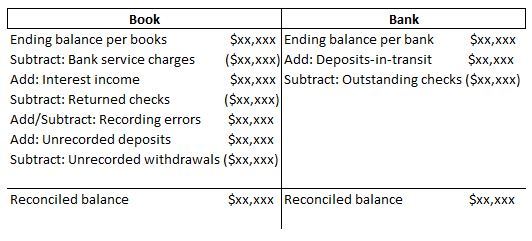
Another big benefit of AI is that humans can overcome many risks by letting AI robots do them for us. Whether it be defusing a bomb, going to space, exploring the deepest parts of oceans, machines with metal bodies are resistant in nature and can survive unfriendly atmospheres. Moreover, they can provide accurate work with greater responsibility and not wear out easily. Here’s a quick video to help you understand what artificial intelligence is and understand its advantages and disadvantages. Now, many reports show that AI will likely create just as many new jobs as it makes obsolete, if not more. But then you run into the problem of having to train humans on these new jobs, or leaving workers behind with the surge in technology.
Quickly analyze big data sets
AI is still in its infancy and can only be used to accomplish certain narrow tasks. Strong AI – or AI that can perform many different complex tasks simultaneously, pose questions to itself, and even learn more about the world in order to match human intelligence – is still only theoretical and has not yet been achieved. Even further away https://www.wave-accounting.net/ is artificial super intelligence (ASI), or AI which far surpasses human intelligence. The days of calling for customer service and waiting on hold to speak with someone are quickly becoming a thing of the past. Many companies now use online chatbots to make responding to and problem-solving for customer concerns a simpler process.
AI in Risky Situations
According to a study by Statista, the global AI market is set to grow up to 54 percent every single year. Well, there are tons of advantages and disadvantages of Artificial Intelligence which we’ll discuss in this article. But before we jump into the pros and cons of AI, let us take a quick glance over what is AI. To counter these shifts and the potential for increased competition, software players need to think ahead continually and innovate with new features. They could leverage proprietary data and insights as sources of differentiation.
About Oracle
AI models can comb through large amounts of data and discover atypical data points within a dataset. These anomalies can raise awareness around faulty https://www.business-accounting.net/learn-the-difference-between-gross-margin/ equipment, human error, or breaches in security. See how Netox used IBM QRadar to protect digital businesses from cyberthreats with our case study.
Even though the revolutionary technology could accelerate industry growth, increase potential users, and fuel nearly $300 billion in new software spending within a few years, it also presents a range of new risks and challenges. Streamlined integration and lower switching costs that the technology will usher in could make it easier for new upstarts to grab business. At the same time, gen AI’s capabilities allow enterprise customers to build rather than buy more of their software.
Performs Risky and Perilous Tasks Efficiently

In the past, the technologies that our ancestors used in their childhood were still central to their lives in their old age. Instead, it has become common that technologies unimaginable in one’s youth become ordinary in later life. The artificial intelligence chip giant briefly took the top spot from the software company this week. And the Institute of Public Policy Research (IPPR) estimates that up to eight million workers in the UK could be at risk of losing their jobs as the tech develops.
- This approach helps meet the needs of all countries and markets without compromising cloud capabilities, while also providing the consistent performance, SLAs, and global pricing for which OCI has become known.
- It is a wide-ranging tool that enables people to rethink how we integrate information, analyze data, and use the resulting insights to improve decisionmaking.
- Although there are both debatable pros and cons of artificial intelligence , its impact on the global industry is undeniable.
- In the U.S., there are no uniform standards in terms of data access, data sharing, or data protection.
- Here’s a quick sampling of more exciting and successful artificial intelligence developments.
However, it also presents significant challenges, including job displacement, high costs, and ethical concerns. Balancing these advantages and disadvantages of artificial intelligence is crucial for maximizing its benefits while mitigating its risks. As AI continues to advance, addressing these issues will be essential for ensuring its positive impact on society. Artificial Intelligence (AI) has rapidly become a transformative technology, impacting various aspects of our daily lives and reshaping numerous industries.
Artificial intelligence (AI) is the theory and development of computer systems capable of performing tasks that historically required human intelligence, such as recognizing speech, making decisions, and identifying patterns. AI is an umbrella term that encompasses a wide variety of technologies, including machine learning, deep learning, and natural language processing (NLP). Deep learning uses neural networks—based on the ways neurons interact in the human brain—to ingest data and process it through multiple neuron layers that recognize increasingly complex features of the data. For example, an early layer might recognize something as being in a specific shape; building on this knowledge, a later layer might be able to identify the shape as a stop sign. Similar to machine learning, deep learning uses iteration to self-correct and improve its prediction capabilities.

You can see an example of automation in a company’s customer support setups. In many cases, a chatbot or AI handles many customers’ complaints, reducing the need for manpower such as customer service representatives. From Cortana to autonomous vehicles, the rapid progress of AI development is showing no signs of slowing down. Artificial intelligence can encompass nearly anything from search engine algorithms to robotics. However, just as humans can be guided by personal biases, so too can AI programs. AI can help organizations reduce their operational costs by automating certain repetitive tasks that typically require a developed workforce to perform.
This unprecedented rise is just one indication of the massive disruption gen AI is poised to unleash on the enterprise software sector. Its impact could lead to a sizeable shift in user segments, value pools, and industry dynamics within and across software categories, presenting how many zeros in a billion a million a trillion software leaders with vast opportunities and significant challenges. This combination is likely to lead to a disruption—and in many cases a reimagining—of current software categories. AI lacks the ability to understand and respond to human emotions effectively.

Leave A Comment